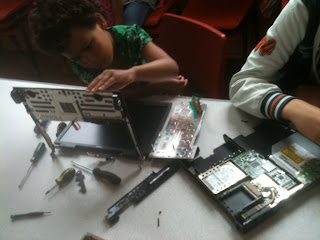We were offered a chance to review Circle Time - plan the best part of your day from Preschoolers and Peace
Circle Time arrived as a PDF download and is a 33 page book written by Kendra Fletcher (homeschooling mother of 8) which includes tips to plan a circle time that works for you, strategies for a peaceful time together (always useful), encouragement and advice on how to get your kids on board, experiences and questions posed by other homeschoolers, words of advice, activities and ideas, printable planners and a great resource list.
I sat down to read Circle Time and was pleasantly surprised - its packed full of simple, practical tips and encouragement. The planners proved very useful and encouraged me to really think about how to best utilise our time together (especially useful for the things I want to do but get round to less than I would like: art appreciation, sewing, musical theory etc)
One of the ideas I loved from the book was having the older girls teach/help - this has worked really well for us : )
Lilly and Sunflower have responded well to leading scripture memorisation, supervising activities and even teaching their younger sisters.
I could also relate to the advice she give - one that really struck a cord with me was “It’s all about having a plan and carrying it out” I had fallen foul of just having a basic circle time (prayer, scripture memorisation, calender work and a couple of quick educational songs) before moving onto our 'real' day. Happily I am now cured and this book has really helped me realise what I was missing out on and how to improve it so we all have a wonderful time.
Circle Time is available for $4.99
You can see what my crew mates thought over at the TOS Blog



























